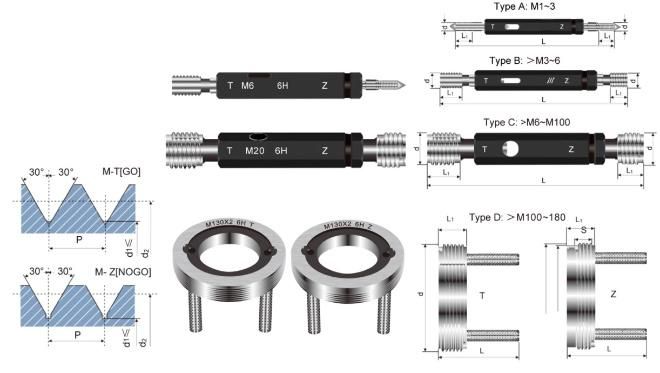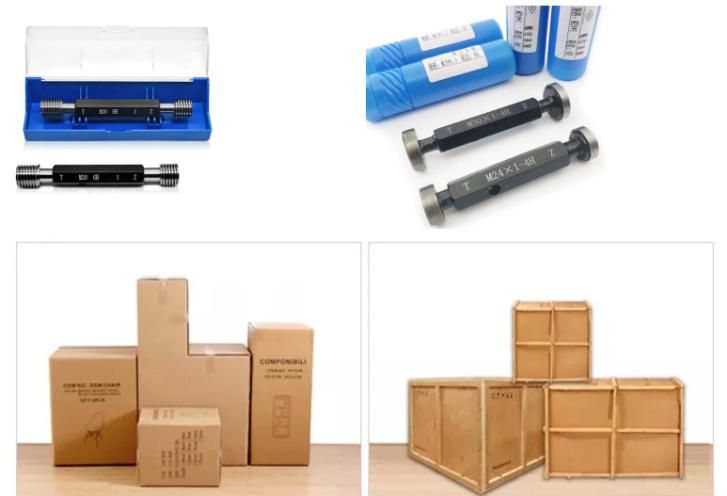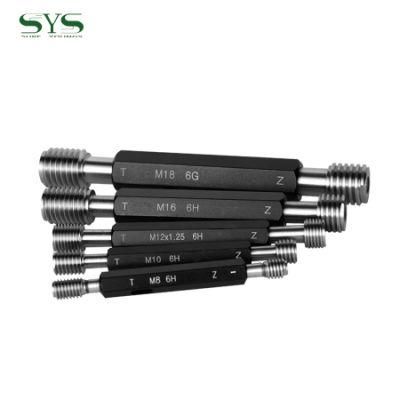
Customized Go Plug Gauges and No-Go Plug Gauges
Dongguan SYS Industrial Co., Ltd.- Type:Limit Gauge
- Measurement Object:Inside Diameter
- Test Methods:Through Check Method
- Material:Steel
- Precision Gauge:Precision Gauge
- Certification:CE, GB, DIN, JIS
Base Info
- Model NO.:G05
- Usage:For Working, For Inspection, For Checking
- Shape:Round
- Customized:Customized
- Application:Automobile, Industry
- Hardness Value:60HRC
- Tolerance:Xxx-Zz
- Transport Package:Plastic Box
- Specification:Customized
- Trademark:SYS
- Origin:China
- HS Code:9017300000
- Production Capacity:40000 PCS Per Month
Description
Basic Info.
Model NO. G05 Usage For Working, For Inspection, For Checking Shape Round Customized Customized Application Automobile, Industry Hardness Value 60HRC Tolerance Xxx-Zz Transport Package Plastic Box Specification Customized Trademark SYS Origin China HS Code 9017300000 Production Capacity 40000 PCS Per MonthProduct Description
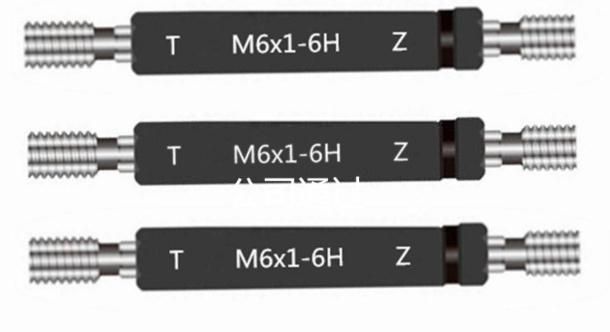
All About Plug Gauges:
Plug gauges, in some cases called pin gauges, are metrology tools whose purpose is to gauge the inside diameters of holes that have been drilled or machined into a manufactured part, component, or assembly. They are essential tools for quality control and enable inspectors, machinists, manufacturing engineers, and others to quickly obtain a go/no-go decision about whether the character of the part being gaged falls within the specified dimensional tolerance for the inside diameter measurement. This gaging process is designed to allow accurate assessments to be made without the need for production personal to resort to the use of additional, more sophisticated, and more expensive measuring instruments such as inside micrometers. In production operations where a large volume of parts is being produced, plug gauges provide a rapid means of assessing the quality without taking time to perform actual hole diameter measurements and to set-up instrumentation.
When using plug gauges, it is important to recognize that the gauge results in a yes/no condition only - the tool is allowing the quality control inspector to accept or reject a part. It is not performing an actual measurement of the diameter, but merely assessing if that diameter is within the tolerance band established for that parameter.
In this article, the types, uses, tolerances, and sizes of plug gauges will be presented. Plug gauges check for the complimentary condition to that of ring gauges, which we cover in our related guide all gauges.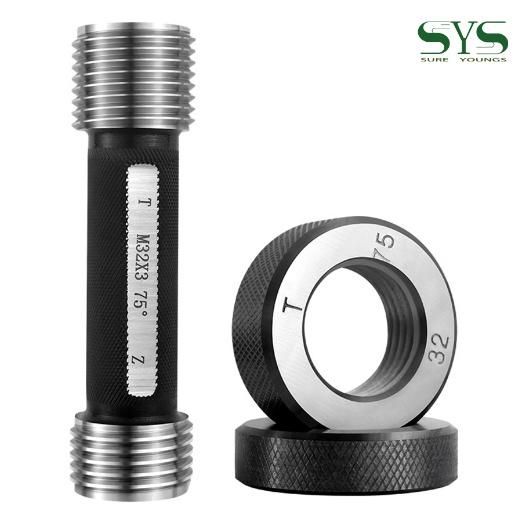
Types and Uses of Plug Gauges
Plug gauges are available in several different types. These include:
- Go plug gauges
- No-go plug gauges
- Combination go/no-go plug gauges
Go plug gauges and no-go plug gauges are called single-ended gauges and consist of a handle into which a precisely machined pin or shaft has been inserted (sometimes called a member) and which is used to verify an aspect of the dimensional tolerances of the hole. For single-ended gauges, they are usually offered in pairs with one go gauge and one no-gauge gauge.
In its use, a go plug gauge is designed to test the minimum dimensional limit of the hole (i.e. the lower tolerance of the hole's diameter) which represents the maximum amount of remaining material on the part or workpiece. For an acceptance condition, the go plug gauge should fit in the hole. If the go plug gauge will not fit into the hole in the workpiece, then that is an indication that the hole's diameter is too small (an insufficient amount of material has been removed from the workpiece) and the part needs to be rejected.
For a no-go plug gauge, its purpose is to validate the maximum dimensional limit of the hole (the upper tolerance of the hole's diameter) which corresponds to the minimum acceptable amount of material remaining on the part or workpiece. For the part to be accepted, the no-go plug gauge should not fit into the hole. If the no-go plug gauge did not fit into the hole, then this is an indication that the hole's diameter Is below the upper limit and the part can be accepted (provided that the go plug gauge did fit into the hole). If however, the no-go plug gauge fits into the hole, then that is an indication that the hole's diameter is too large (i.e. beyond the upper tolerance limit that was specified), meaning that too much material was removed during the machining operation, and therefore the part must be rejected. Table 1 below summarizes these conditions and the resulting accept/reject status of the part.